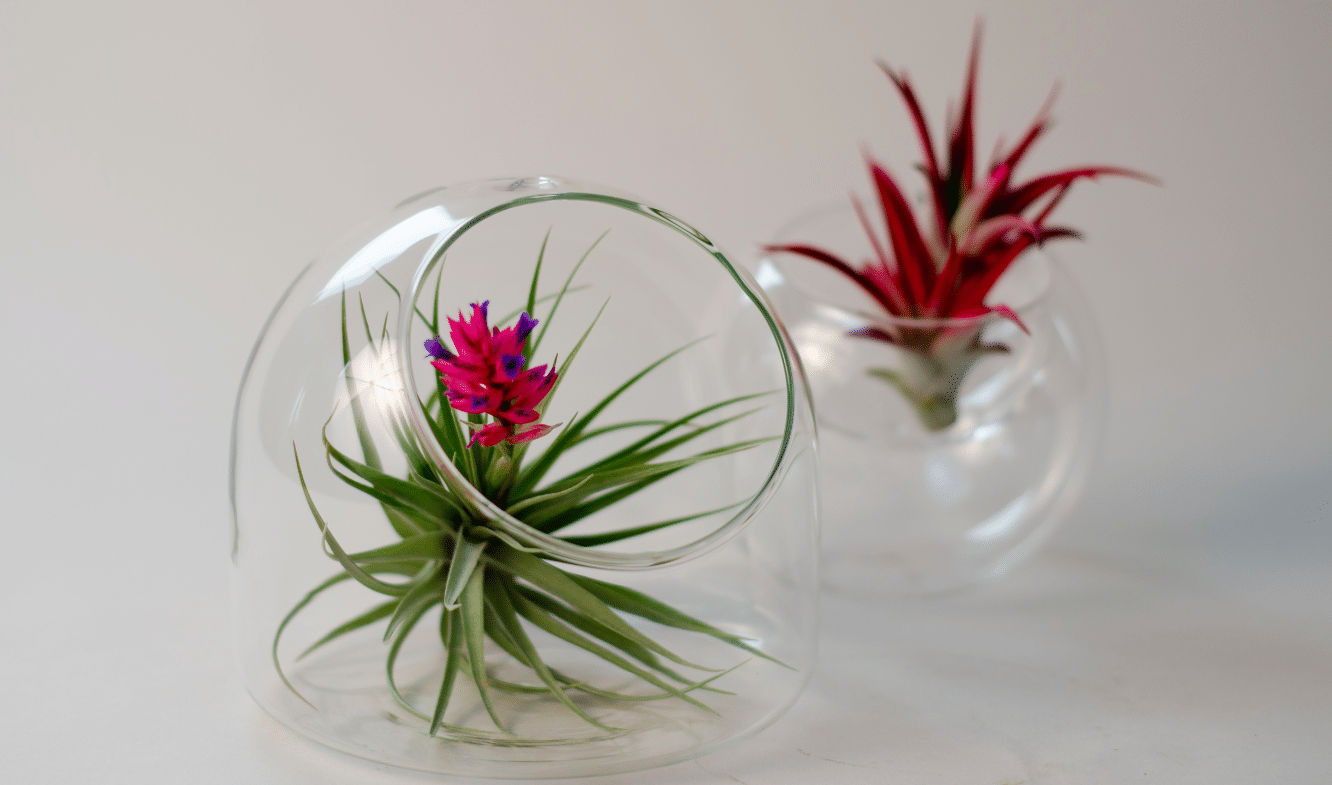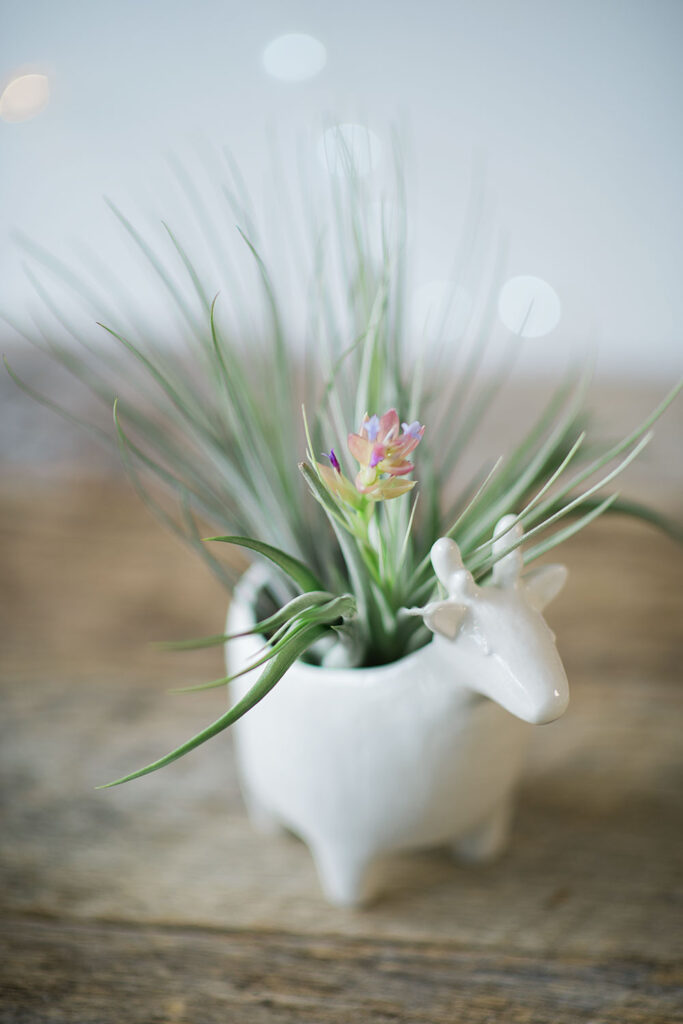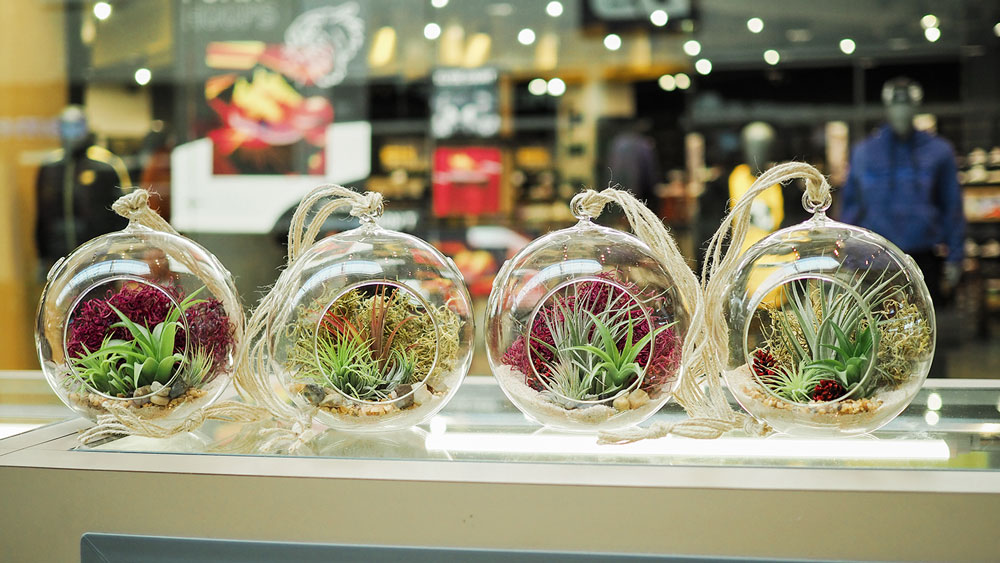Air plants, also known as tillandsias, are epiphytic plants that typically grow by attaching themselves to trees, rocks or even power lines in tropical and sub-tropical regions. They have adapted to absorb moisture and nutrients from the air rather than through their roots. This makes them perfect candidates to grow in pots without soil!
While air plants don’t require soil, planting them in pots opens up creative ways to display these beautiful and unusual plants. With a little care and attention, you can have thriving container air plants that will dazzle your guests. Here’s everything you need to know about selecting, planting and caring for air plants in pots.
Choosing the Right Air Plant for Containers
With over 600 species, air plants come in a wide variety of shapes, sizes and foliage colors When selecting air plants for planting in pots, go for smaller varieties that will fit well in the container. Good options include
-
Tillandsia ionantha – One of the most popular air plants, available in multiple colorful varieties like Mexican flame and Peach. Grows up to 3 inches wide.
-
Tillandsia juncea – Produces vibrant red bracts that remain for months Matures at 5 inches tall
-
Tillandsia stricta – Forms tight rosettes of thin, curly leaves. Stays under 3 inches wide.
-
Tillandsia seleriana – Tiny air plant with thin triangular foliage Grows 1-3 inches tall.
-
Tillandsia bulbosa – Bulb-shaped leaves give it a distinct look. Remains compact at 3-5 inches.
Getting the Right Potting Mix
While air plants don’t require soil, you’ll need some potting mix to plant them in containers. The key is to use a very fast draining medium that will dry out quickly. Some good options include:
-
Coarse orchid bark – Provides airflow while retaining a little moisture.
-
Horticultural charcoal – Absorbs moisture while preventing rot.
-
Perlite – Lightweight and porous for excellent drainage.
-
Pumice – Helps aerate the roots and dries rapidly.
-
Lava rocks – Create air pockets for drying out the medium quickly.
A typical potting mix for air plants includes equal parts orchid bark, horticultural charcoal, perlite or pumice. You can also use readymade cactus and succulent soil mixes. Ensure the pot you choose has drainage holes at the bottom.
Mounting Air Plants in Pots
Air plants have very minimal roots, so they don’t need to be actually planted in the potting medium. Here are some ways to creatively mount them:
-
Place the air plant on top of the potting mix and use small rocks or pebbles to hold it in place.
-
Set the air plant in a seashell filled with potting mix, and place the shell on top of the mix.
-
Fix the air plant to a piece of driftwood or cork bark using fishing line or glue, and insert that into the pot.
-
For a natural look, stick the air plant between pieces of bark or lava rock.
-
Use florist wire to attach the air plant to the rim or side of a glass terrarium.
Caring for Potted Air Plants
Caring for air plants in pots is slightly different than caring for soil-less air plants. Here are some tips:
-
Place in bright, filtered light. Avoid direct hot sunlight.
-
Water by submerging the entire pot in water for 15-20 minutes 1-2 times a week.
-
Mist the plants daily to increase humidity. Use rainwater or distilled water.
-
Apply air plant fertilizer at half-strength with occasional waterings.
-
Monitor moisture – don’t allow plants to sit in waterlogged mix.
-
Remove dead leaves and pups to encourage new growth.
-
Move outdoors in summers if your climate permits.
-
Keep away from extreme cold and heat sources indoors.
Troubleshooting Common Problems
Here are some common issues seen in potted air plants and how to fix them:
-
Wilting, curling or brown tips – This indicates under-watering. Soak more frequently.
-
Mushy base or rotting – Overwatering or slow drying medium. Water less and use better draining mix.
-
Pale or bleached leaves – Too much sun. Move to a shadier spot.
-
Loss of color or dull foliage – Insufficient light. Provide bright filtered sunlight.
-
No new growth – Could be due to low humidity or temperatures. Mist and move to warmer spot.
-
Pests like mealybugs – Isolate and remove pests manually. Spray with insecticidal soap.
Propagating Air Plants in Pots
As air plants mature, they produce offshoots or pups around the base. When these reach 1/3rd the size of the mother plant, they can be removed and potted up to create new plants. Follow these steps:
-
Use a sharp, sterilized knife or scissors to cut the pup off at its base.
-
Allow the cut end to callus over for a few days in a shady spot.
-
Plant the pup in a pot with fresh potting mix. Water sparingly initially.
-
Slowly increase watering as the pup establishes over 2-4 weeks.
-
Fertilize monthly to encourage growth. The pup will mature in 1-2 years.
Creative Ways to Showcase Potted Air Plants
Since air plants are so unique, displaying them in pots allows for lots of creativity. Some ideas include:
-
Creating a mini air plant terrarium landscape in glass bowls or jars.
-
Arranging a collection of varied air plants in pebble trays or hanging glass globes.
-
Using air plants as living bath accessories. Wire them to shower caddies or dental cups.
-
Planting complementary air plants like ionantha and stricta together in small pots.
-
Placing potted air plants in ornate holders like seashells, birdcages, or macrame hangers.
-
Using air plants to decorate desktops, bathrooms, or as living jewelry.
The right care will keep your potted air plants happy for years. Their otherworldly forms and minimalist beauty make them ideal for modern, urban living spaces. With a little creativity, you can find many spots indoors and out to show off your magnificent container air plants.

How to care for Tillandsia, or Air Plants:
- In their natural environment, air plants receive water from humid air and rainfall. In your home, they will need regular watering which comes in the form of a nice long soak. I found they like spring water the best, so fill a large bowl with spring water, and put your air plant collection into the water. Allow them to soak for 2 or 3 HOURS.
- If you want to use tap water, fill the bowl the night before to give the chlorine a chance to evaporate. Chlorine is toxic for you plants, so don’t ever just fill a container with tap water and drop them in right away. Off topic, but worth considering; if it’s that bad for your plants, what’s it doing to us?
- Once they’ve had their nice long soak, take them out one by one, grasp gently at the base and shake them vigorously to remove excess water. Place them upside down on a towel to dry over night. Tillandsia can still suffer from water rot just like any plant, so don’t allow water to stay in the leaves.
- Air plants need a high light environment, so make sure they receive adequate sunlight. Filtered light is always best, so don’t put them in a south facing window sill in the south in August and expect them to thrive. Next to the window out of direct rays would be a better solution.
- In the summer, I collect rain water and use that to soak my plants. If I can get them outside in summer rain showers I try to do that. Rain water has nutrients not in filtered water, so anytime plants can receive rain water, they always do better.
- While I’ve seen people recommend diluting plant food in the water for the plants, I’ve never done it so I can’t speak to that method. The summer rainwater seems to work the best.


Misting your air plants once a month is not adequate. While this is the general instruction given out by an awful lot of people selling air plants, it’s simply not true.
You also cannot keep them successfully in an office with low light or only over head light. I worked a job once where I took care of plants in fancy office buildings. The number of air plants I had to throw away, because people were told they could mist them once in a while and keep them in those closet style offices was staggering.

Tillandsia plants, better known as Air Plants, are growing in popularity year over year. The question I keep hearing is, “These are interesting for sure, but how do I display air plants?”
To be honest, it’s a bit more freeing, because with air plants, ANY container is going to work. There is no need for soil and no worries about good drainage, so anything from teacups to glass containers are appropriate for displaying air plants.

Air Plant Care Guide // Garden Answer
FAQ
How often should I water an air plant?
Where is the best place to put an air plant?
How do I care for air plants glued to container?
Do air plants need to be repotted?
